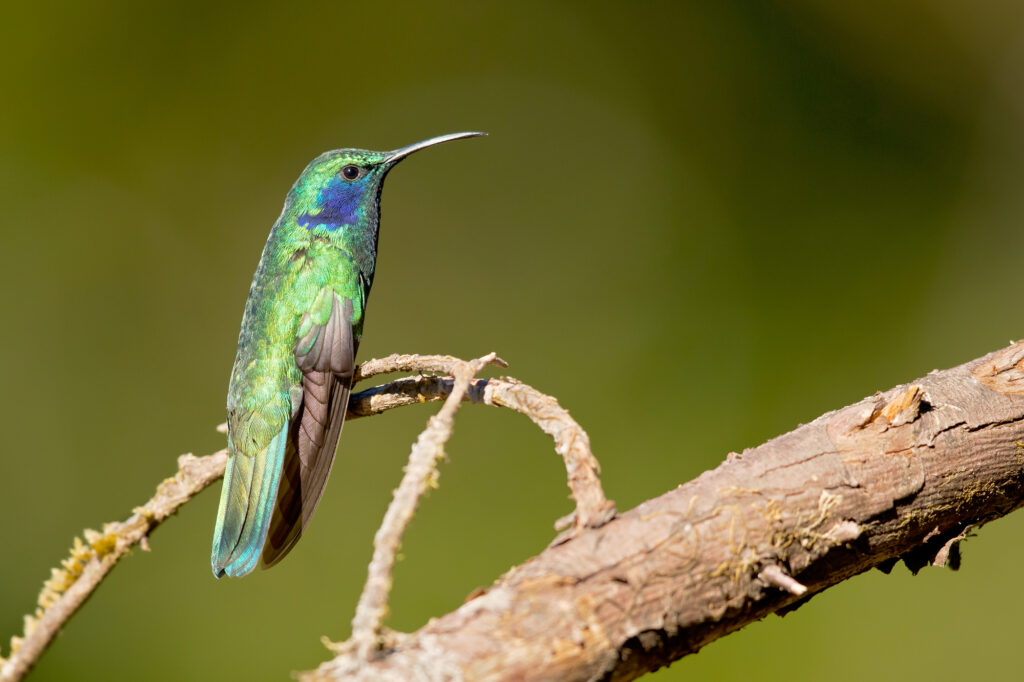Kentucky is a state in the southeastern region of the United States, nicknamed the “Bluegrass State,” based on the prosperity of bluegrass found in many of its pastures.
The state is known for its diverse geography and cultural history, offering exciting attractions for couples, families, and tourists. Kentucky is most widely known for the Kentucky Derby held in May.
The state is also home to Mammoth Cave National Park, the world’s longest cave system, and the most significant length of navigable streams and waterways in the contiguous United States.
Lastly, unique for its blended culture, Kentucky is a fascinating state with approximately 12.7 million acres of commercial forest land, making up half of its land area. Breeding or foraging in these forested trees, you’ll be lucky enough to find four whimsical hummingbird species occasionally zipping around.
Below, you’ll find a list of four hummingbirds in Kentucky:
Ruby-Throated Hummingbird
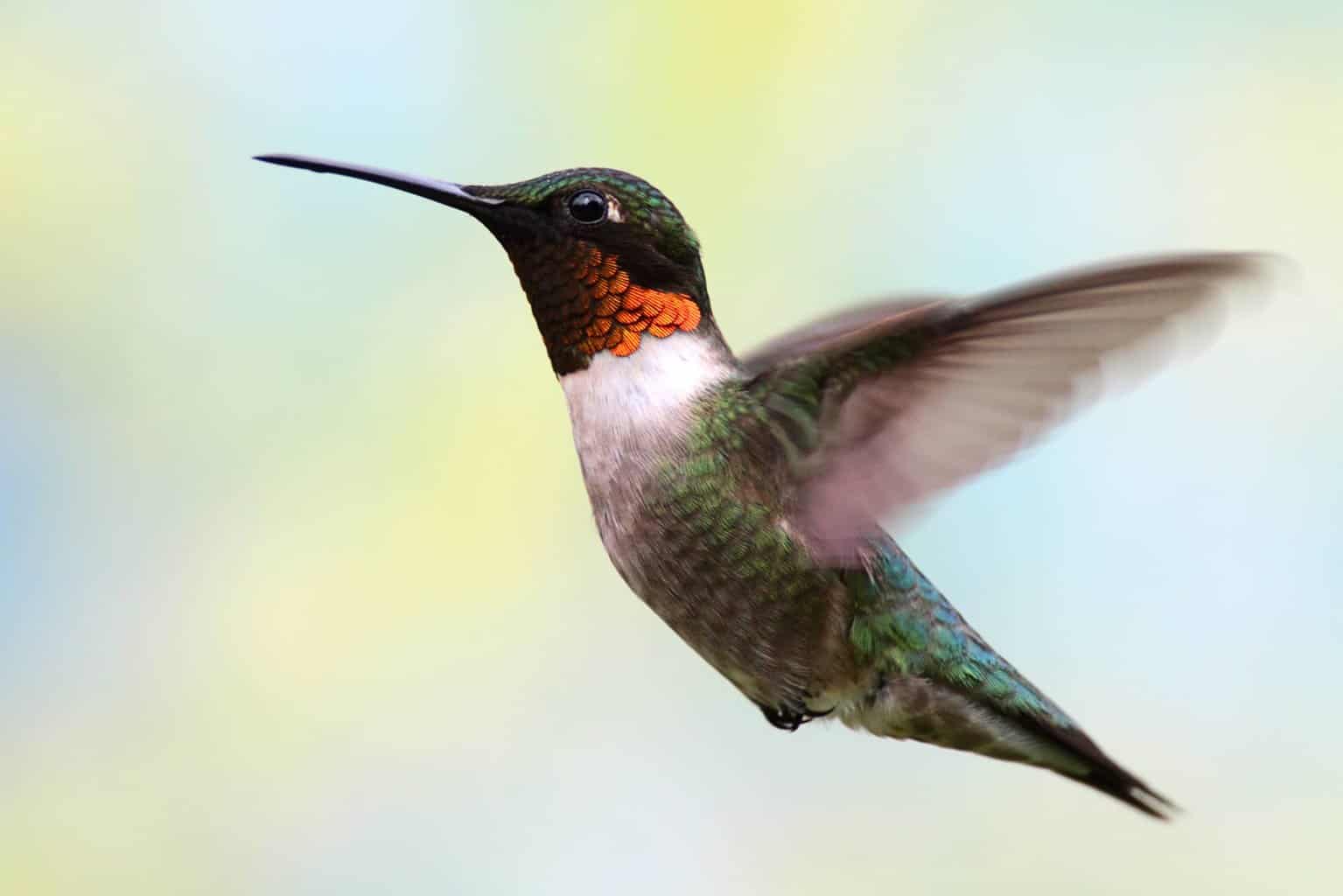
- Scientific name: Archilochus Colubris
- Length: 2.8 to 3.5 inches
- Weight: 0.12 ounces for males and 0.13 ounces for females
- Wingspan: 3.1 to 4.3 inches
Description:
Male Ruby-throated hummingbirds generally have dark, black facial features with straight and slender bills, and iridescent ruby gorgets that appear dark in poor lighting conditions. Additionally, males display grayish-white chests that look like a vests, metallic green flanks and crowns, darker wings, and forked tails.
Female Ruby-throated hummingbirds have plain throats with light markings of white or dusky streaks and slight buff flanks. Their sides are grayish-green and less brilliant than the males, and they have notched tails instead of the deeply forked male tail.
Additional Information:
The Ruby-throated hummingbird breeds in the eastern United States, then migrates to Central America or Mexico for its wintering grounds. Therefore, they are native breeders in Kentucky, arriving in spring, from early May through the warm summer months until cold fall temperatures kick in.
Like many species of hummingbirds, Ruby-throats rely on the flowers of shrubs as a source of nectar, trees, epiphytes, or small flying insects to fuel their petite bodies and active lifestyles. So, consider planting colorful, tubular flowers with high sugar content or investing in nectar feeders in your backyard to attract these beautiful birds.
Adult male and female Ruby-throated hummingbirds are not social birds, except during courtship. In fact, they can be rather aggressive birds, especially towards other wild hummingbird species that may be encroaching on their territory. They often use unique aerial and dive displays to defend their territory or source of nectar.
Ruby-throated hummingbirds weigh as little as one US penny, making it even more impressive that they accomplish an endless, 500-mile journey across the Gulf of Mexico during the hummingbird migration seasons in spring and fall.
Rufous Hummingbird
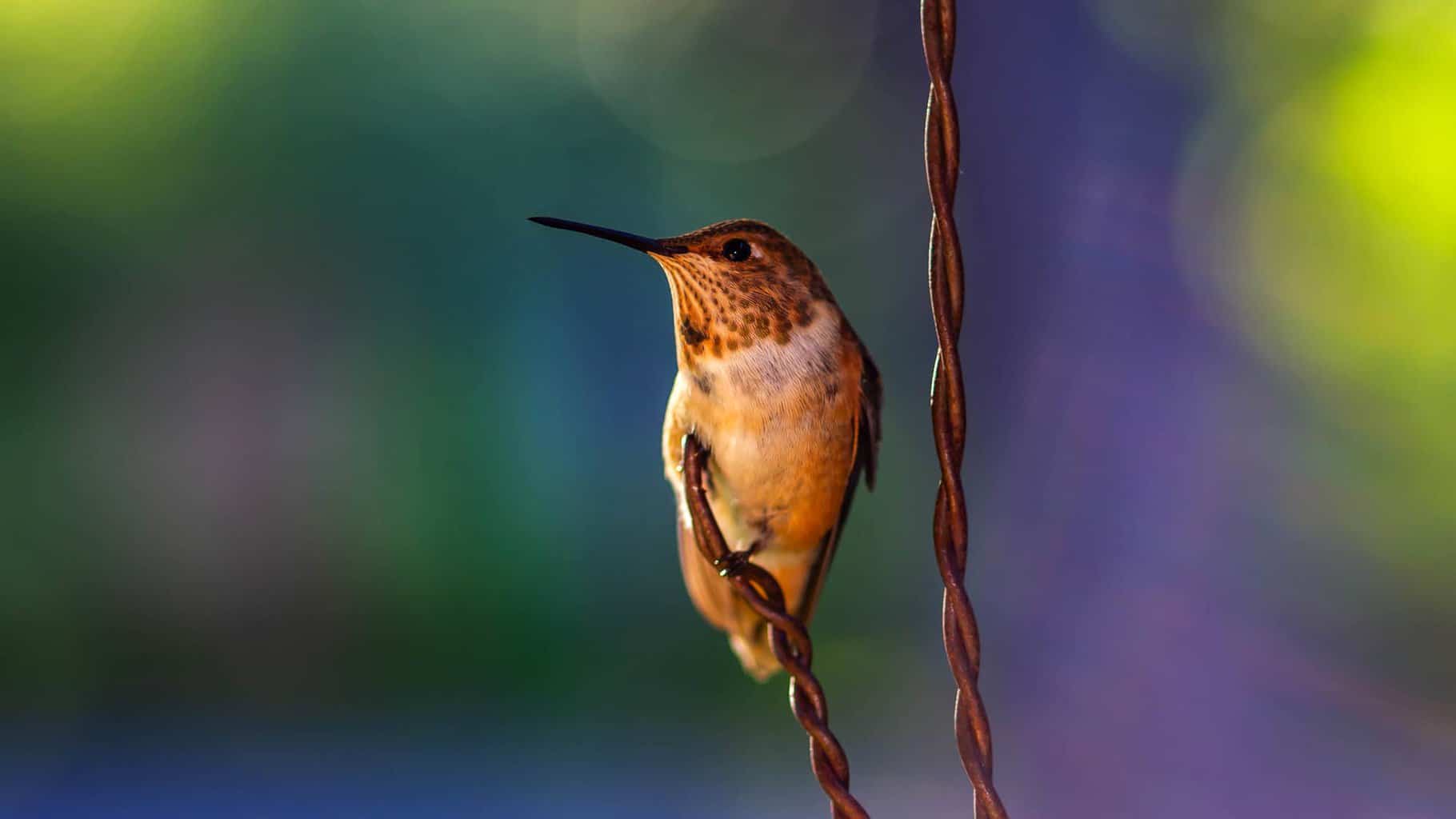
- Scientific name: Selasphorus Rufus
- Length: 5 inches
- Weight: 0.07 to 0.17 ounces
- Wingspan: 4.3 inches
Description:
The Male Rufous hummingbird has a long slender bill and a rusty, copper-orange rufous head, flanks, and back with an iridescent orange-red throat patch. Additionally, around five to ten percent of males display a green wash on their crowns and back.
Female Rufous hummingbirds display green crowns and backs and white, somewhat speckled throats with a central orange-red splotch. Lastly, the females show a buff chest and sides and a dark green tail with a rusty, rufous base.
Additional Information:
Rufous hummingbirds are seasonal in Kentucky, arriving in early May to take advantage of the wildflowers.
Rufous hummingbirds are well-known for their highly aggressive nature around their summer nesting grounds and food sources, even towards larger birds. They produce a variety of threatening gestures, including impressive dive displays, tail fanning, and high-pitched, chipping vocalizations.
If you’re still tempted to attract these oddball hummingbirds to your garden, be sure to set up multiple and widely spread nectar feeders to allow other hummingbirds to get a sip of the sugar water, and supply them with plenty of options for hummingbird baths.
Despite their tiny bodies, Rufous hummingbirds have the longest migration route compared to any other individual bird species in the United States, traveling a prodigious 2,000-mile journey one way.
Mexican Violetear
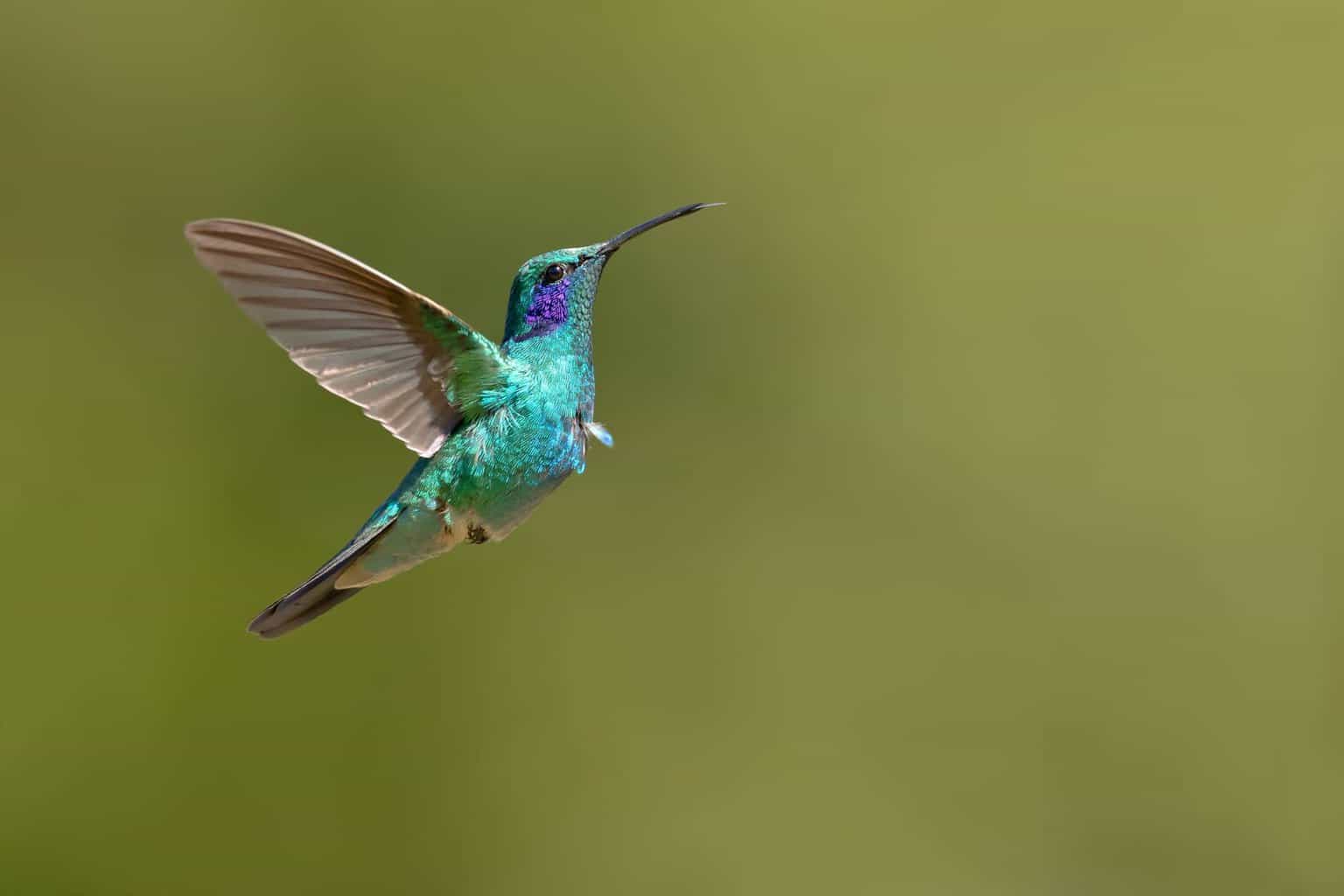
- Scientific name: Colibri Thelassinus
- Length: 3.8 to 4.7 inches
- Weight: 0.17 to 0.19 ounces
- Wingspan: 4.7 inches
Description:
Mexican violetears have an overall metallic or emerald-green upper plumage that turns into a bronzy color on the central, upper tail feathers along with iridescent violet cheeks. In comparison, the female tends to be slightly smaller, contradictory to the usual hummingbirds.
Immature birds have duller, olive-green plumage with gray-washed underparts — a molting bird can show bright metallic patches on its throat and breast.
Additional Information:
The Mexican violetear is a medium-sized hummingbird, common to forested and woodland areas ranging from southern Mexico to Nicaragua. However, it is fairly nomadic, meaning occasional wanderers can zip around Kentucky from time to time, though it’s a rare sight.
Male Mexican violetear hummingbirds are vocal and like to sing a monotonously repetitive melody, sounding like a dry chitter from exposed twigs in their territorial areas.
The Mexican violetear hummingbird generally forages alone in mid-level to canopy-high zones in deforested areas. However, these territorial and aggressive birds occasionally gather while feeding at flowering trees, especially the coffee-shade Inga.
The Mexican violetear hummingbird is occasionally a guest among hummingbird feeders and backyards for a dip in the bird bath or a few cups of water for drinking.
Black-Chinned Hummingbird
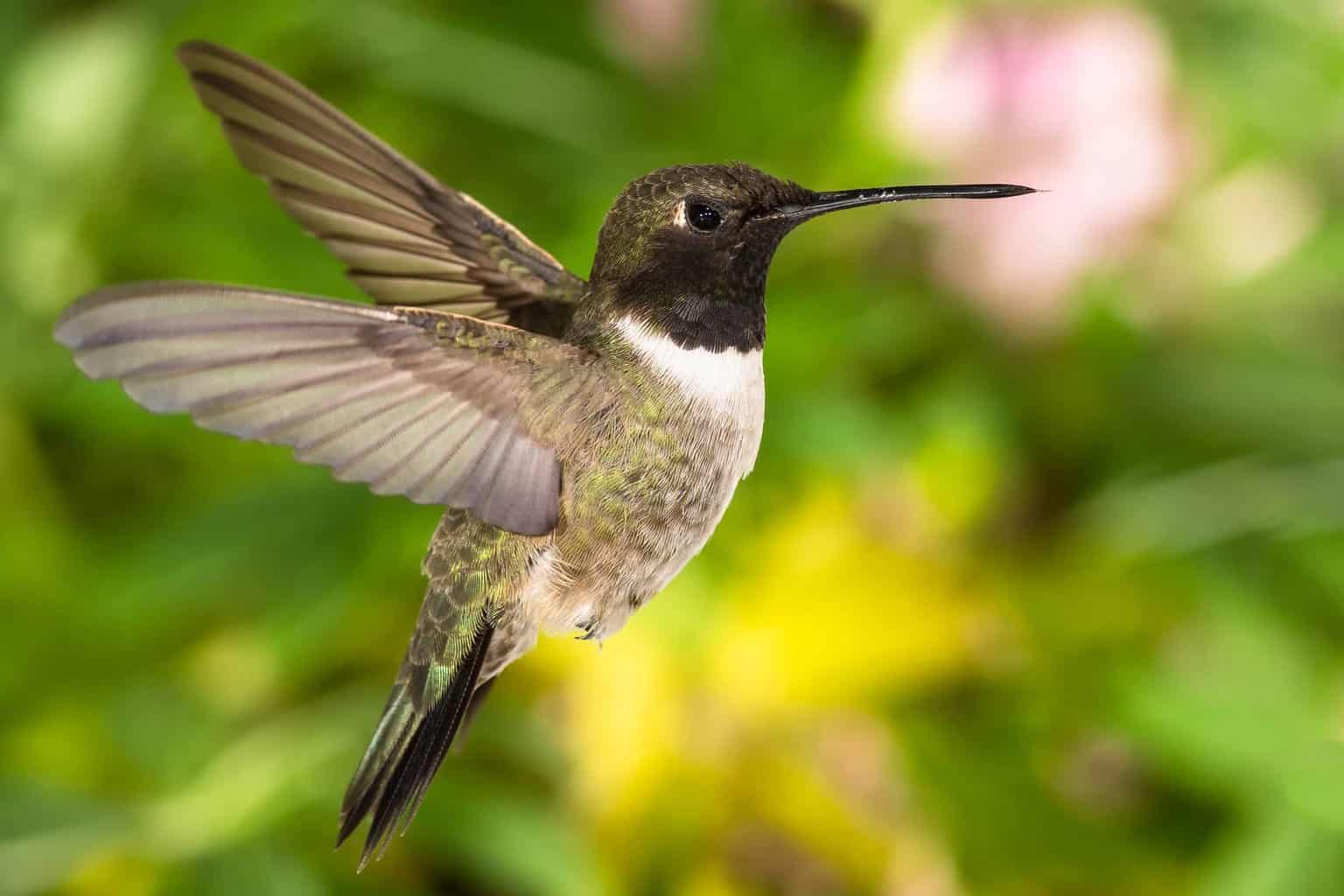
- Scientific name: Archilochus Alexandri
- Length: 3.25 inches
- Weight: 0.098 to 0.11 ounces
- Wingspan: 4 to 5 inches
Description:
Male Black-chinned hummingbirds typically have green or greenish-gray crowns, backs, flanks, and distinctive black chins with a white spot right behind their eyes. Additionally, they have an iridescent purple band with a contrasting white collar around the bottom of their gorget.
Female Black-chinned hummingbirds have similar markings, including their distinctive black chin; however, the females have faint green streaks displayed on their white throats.
Additional Information:
Although a rare sight in Kentucky; however, you can find Black-chinned hummingbirds roaming around mountainous areas, canyons, backyards, and parks.
The male and female Black-chinned hummingbirds typically use different habitats from each other for their breeding territories. Furthermore, Black-chinned hummingbirds tend to exhibit territorial behavior around feeders and small feeding sites, becoming more defensive as the breeding season continues.
Consider planting bright, tubular, and nectar-rich flowers to attract these beauties or offering a bird feeder with sugar water.
Conclusion
Of the four hummingbirds found in Kentucky, one is native, one is seasonal, and two are rare vagrant species. So consider pulling out the shovel and planting native nectar-rich flowers or set up hummingbird feeders in your backyard to attract these beautiful zipping birds.
For another interesting read on the unique, wide array of birds that Kentucky has to offer, consider reading the 8 Owls in Kentucky.

